After a big surge in the price like the current one, wise investors are neither all-in nor all-out of precious metals… with this caveat:
Gold is the world’s greatest currency, so there’s no need to sell it for fiat simply because the risk of a correction grows as the price continues to rise.
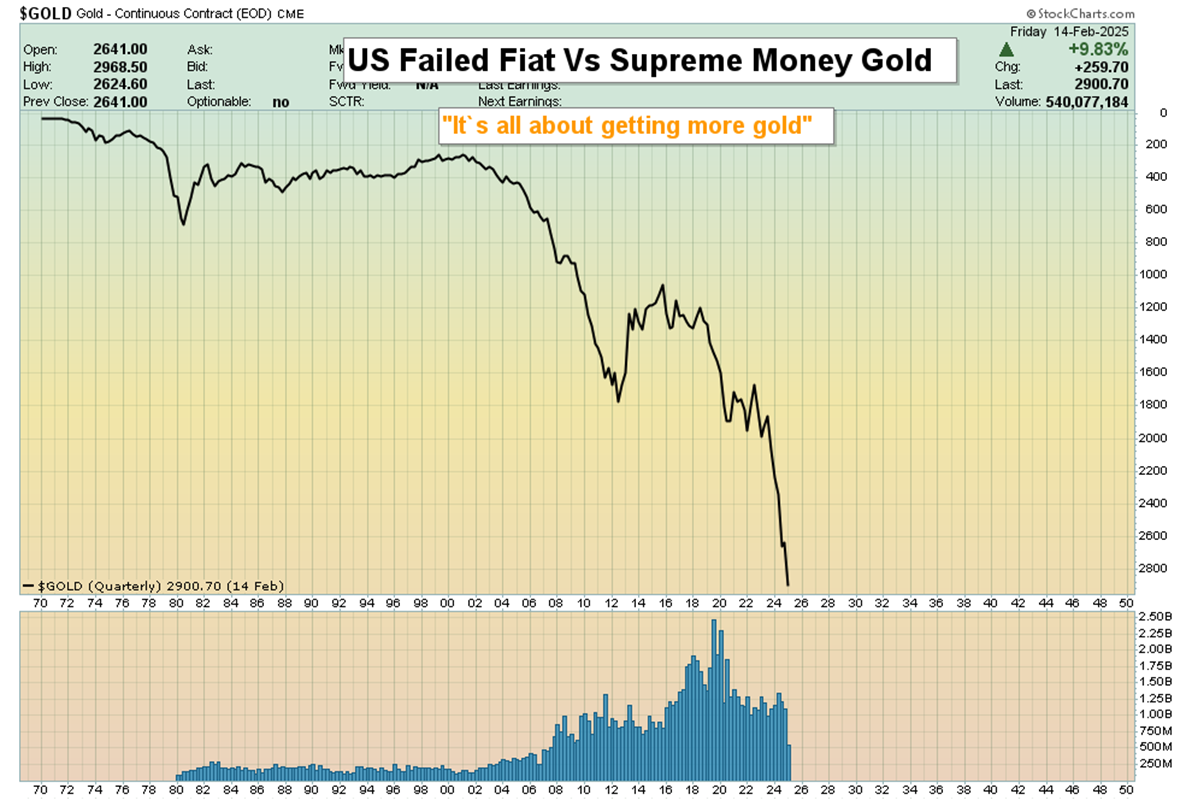
The stunning chart that showcases the long-term collapse of US fiat against gold.
Fiat does rally against gold on occasion, and when it does… it’s a time to sell more fiat and get more gold.
While most investors should never sell gold (except to spend it on “fun stuff”), partial profits should be booked now in silver bullion and mining stocks.
Simply put, there’s a lot more action with silver and the miners than with gold. They are not currencies that are accumulated by central banks, but they are bought with significant size by many Western gold bugs who want to make large fiat money profits.
The sharp falls these items experience on modest dips for gold can be very unnerving, so partial profits on them need to be booked as gold becomes technically overbought and nears the key round number of $3000.
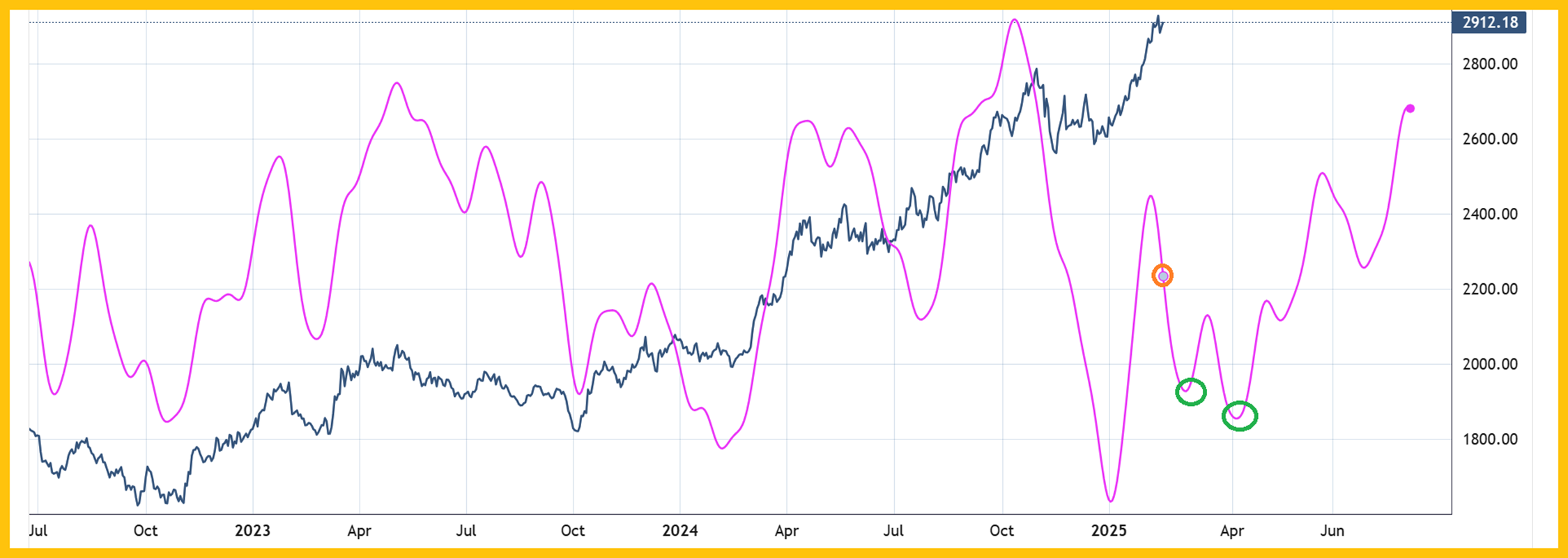
The key gold cycle chart. It’s an average of 15 cycles for gold. The cycle action suggests the current minor softness for gold could last for another two to six weeks.
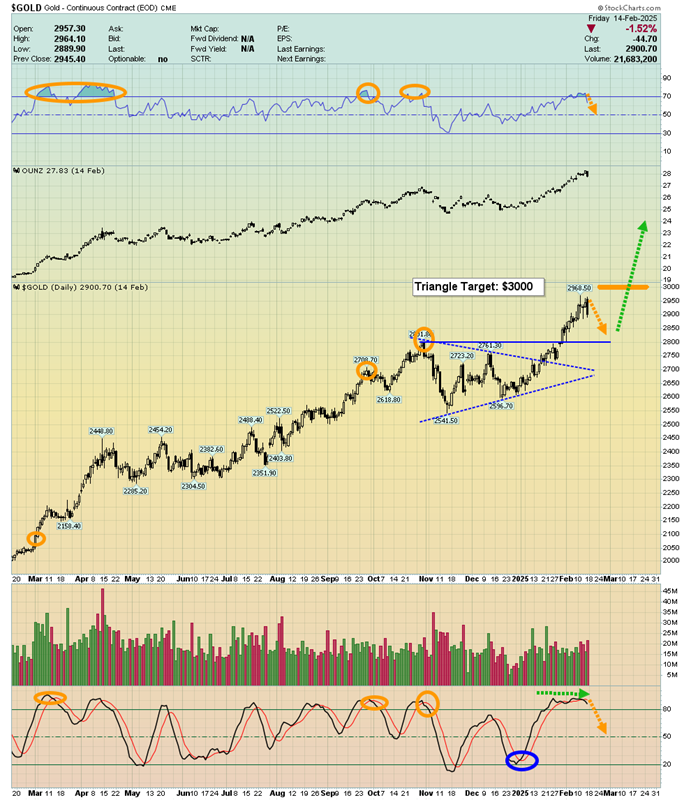
The daily chart for gold. The RSI and Stochastics oscillators reached overbought status as gold neared $3000. I’m a buyer of more gold (perhaps alongside 3 billion Chindians?) at $2800, but to buy silver and miners I need to see those oscillators in an oversold state and be there while gold trades at key support.
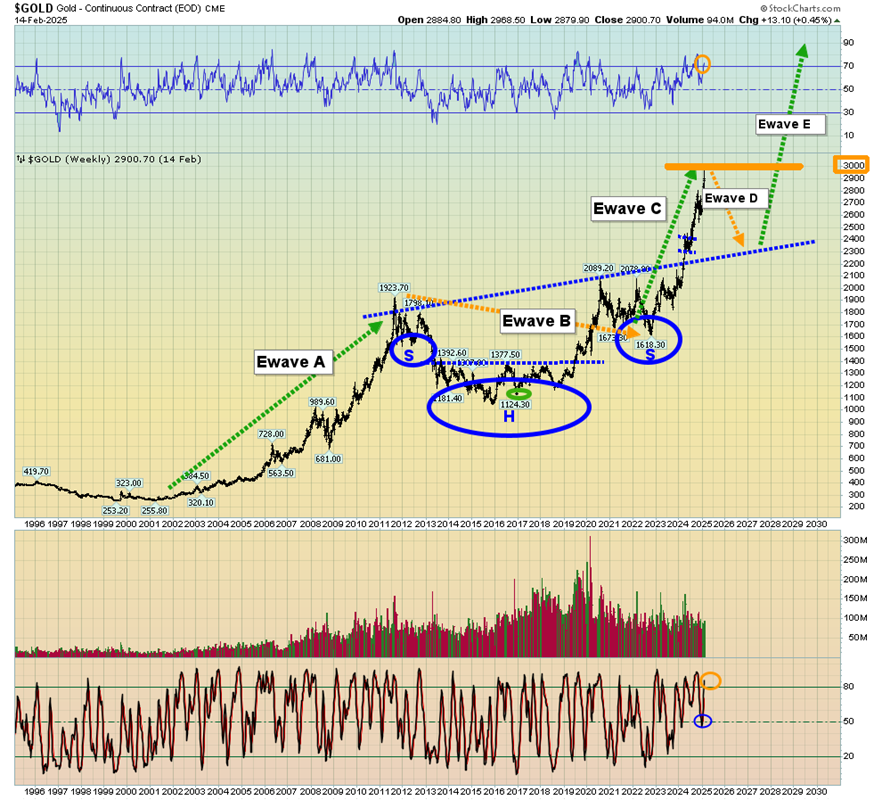
A look at the weekly chart from an Elliott Wave perspective, gold is roaring higher in a C wave. It could end near round number $3000 (and any price in the $2800-$3200 range would qualify as about $3000).
The good news: An Elliott C wave is powerful and it doesn’t need to end in the $3000 area. It could continue to $3500 or even $4000. From a fundamental perspective… what would end it and usher in the start of Wave D?
One possible scenario is peace in Ukraine. Global central banks have been aggressive gold buyers since the war started and now high-level peace talks are starting between the US and Russian governments.
Central banks could fade their buying if the war comes to an end, but it’s unknown how much of their buying is directly related to the Ukraine war and how much is related to concern about the fiscal position of the US government… and to concerns about dollar-based sanctions on other governments over the long term.
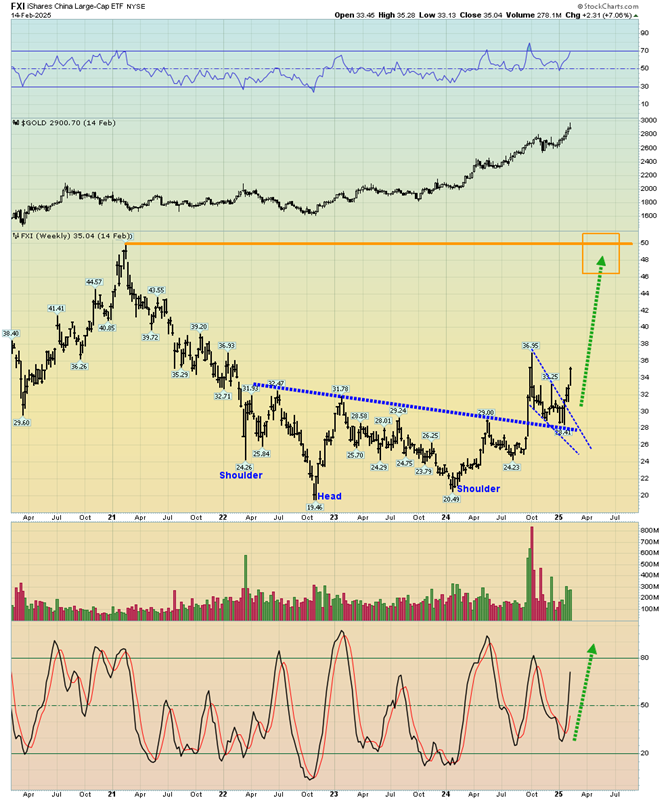
The fabulous Chinese stock market chart. Futures market gamblers in Shanghai arguably were a bigger factor in the past year’s gold price surge than central banks. They were concerned about the domestic economy and now some concerns are gone.
To sum up the risks for gold, what can be said is that sanctions risk will fade but not disappear. The same is true for risks in the Chinese economy and for the US government’s out of control debt. US President “Super Donnie Man” Trump and his helper Elon are reducing a lot of government red tape, but it’s unknown how much of a dent in the huge US debt their work will make.
Gold is up about $1200 from the year 2023 $1800 area low, which is about 67%. A 20% pullback from $3000 would be healthy and normal, and all investors should be aggressive gold bullion buyers into that dip, if it occurs. Silver and the miners would be outstanding buys near the low of an Elliott Wave D (about $2400 for gold).
Some analysts have noted a rough eight-year cycle for gold, where gold makes a key low approximately every eight years. It can be argued that some of those lows occurred in or near the years 2000, 2008, 2016, and 2024.
That means gold is only one year into the current cycle. A corrective dip is expected to occur at any time after a 67% surge, but the bulls clearly have the edge and the next eight-year cycle low is unlikely to occur until the year 2031 or 2032.
The bulls also have some new potential “muscle” in play. Elon and his DOGE crew have begun to look at Fort Knox. On the one hand, I’ve predicted the audit will reveal no significant irregularities.
On the other hand, I’ve urged Western gold bugs to take note of US Treasury man Scotty Bessent’s recent statements about using US government assets to reduce debt.
Horrifically, the Treasury’s gold is valued with mark to model accounting, and valued at the ludicrous price of about $42/oz. If Scotty makes a successful case to mark it to market (currently about $2900), the Elliott C Wave could extend dramatically. If the gold bears are not careful, they could find themselves short gold on a day when Scotty announces the change… and that could be a day that sees gold gap hundreds of dollars higher, obliterating the bears.
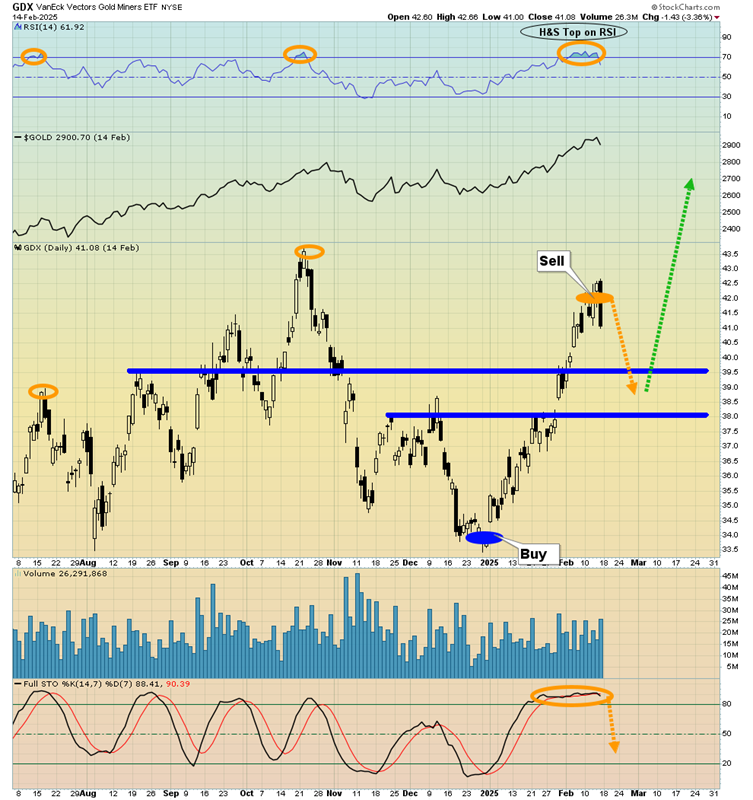
The GDX (NYSE:GDX) chart. It’s clearly a time to book partial profits; RSI has a H&S top, Stochastics (14,7,7 series) has been overbought for a month, and most important of all… GDX has surged 25% higher in just six weeks. The profits are juicy, and investors need to take some of them.
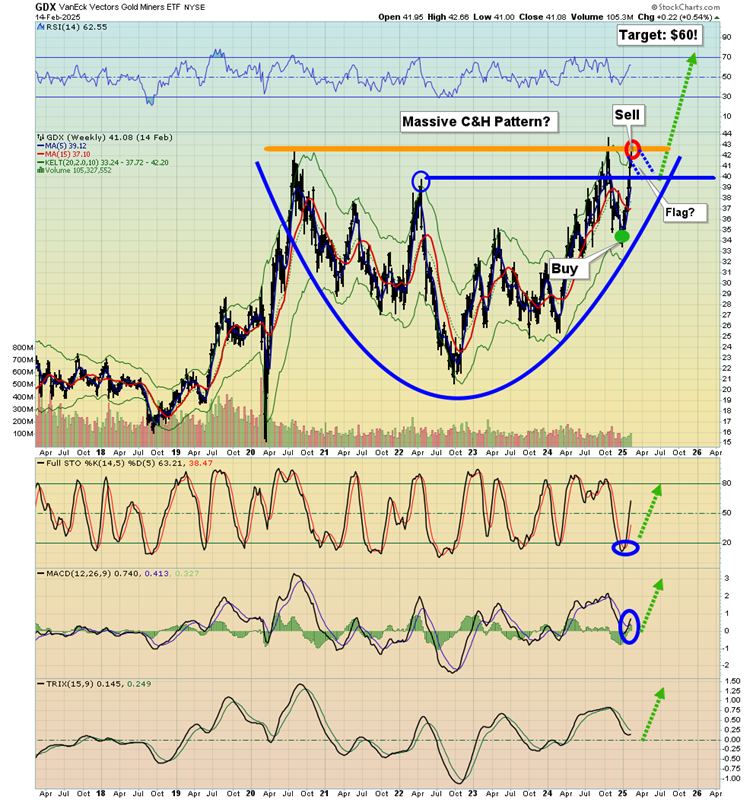
Having said that, the phenomenal GDX weekly chart. If any chart suggests the US Treasury is going to mark its gold to market, it’s this one. Any corrective action here now would form a bull flag… and then a surge to $60 is the next probable move for the price.
